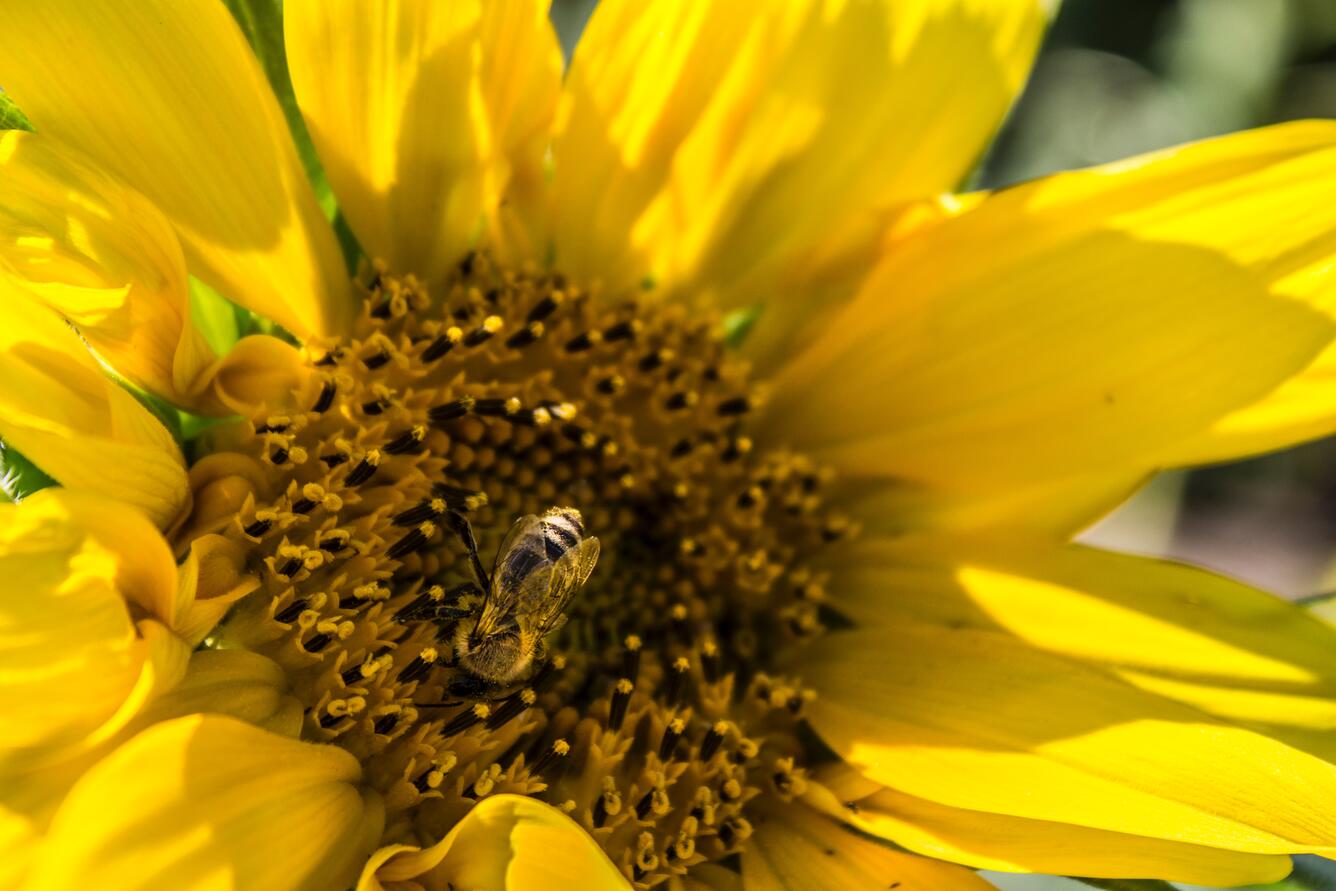This report describes the science vision of the USGS from 2025 to 2035 to support management, conservation, and decisions on animal pollinators and their habitats. This “Pollinator Science Strategy” was drafted by a team of USGS researchers and was further developed through feedback from Federal, State, Tribal, nongovernmental organizations, and industry partners.
Species we Study: Pollinators
USGS Bee Lab at the Eastern Ecological Science Center
USGS Pollinator Research
This “U.S. Geological Survey Pollinator Science Strategy, 2025–35—A Review and Look Forward” (“Pollinator Science Strategy”) describes the science vision of the U.S. Geological Survey (USGS) to support management, conservation, and policy decisions on animal pollinators and their habitats. As the science arm of the Department of the Interior (DOI), the USGS has a primary role in providing scientific information to natural resource managers and policymakers across the United States.
This “Pollinator Science Strategy” was drafted by a team of USGS pollinator researchers and was further developed through feedback from Federal, State, Tribal, nongovernmental organizations, and industry partners. This “Pollinator Science Strategy” highlights the USGS’s role in the research to promote healthy pollinator populations and address partner information gaps so they can make more informed management decisions. By outlining the importance of USGS science in addressing the information needs of other agencies, organizations, and the public, the “Pollinator Science Strategy” reaffirms the USGS’s commitment to pollinator research and showcases our research priorities for 2025–35.
With more than 300 research centers nationally, the USGS is equipped to address pollinator science across scales of complexity and geographic range. USGS pollinator science is organized according to the following five thematic areas:
- Assessing species ecology, distributions, and natural history requirements.
- Tracking species status and trends.
- Understanding species threats and stressors.
- Informing restoration and management actions.
- Developing novel methods for improving pollinator research, monitoring, and population outcomes that can benefit our Nation.
Our pollinator information products and associated data are made widely available to the public to ensure scientific transparency and accessibility. This “Pollinator Science Strategy” concludes with several research goals that the USGS will work towards from 2025 to 2035, representing our vision for USGS science. These research goals include synthesizing and modernizing the latest information on pollinator threats, developing research that assists managers with habitat design and restoration, providing training to partners on native bee identification and monitoring design, and developing new technologies for assessing the status and trends of our nation’s pollinators.
Suggested Citation
Otto, C.R.V., Graves, T.A., Robertson-Thompson, D., Pearse, I., Thogmartin, W.E., Murphy, C., Webb, L., Droege, S., Steinkamp, M., and Grundel, R., 2025, U.S. Geological Survey Pollinator Science Strategy, 2025–35—A review and look forward: U.S. Geological Survey Circular 1556, 16 p., https://doi.org/10.3133/cir1556.
ISSN: 2330-5703 (online)
Table of Contents
- Acknowledgments
- Executive Summary
- U.S. Geological Survey Pollinator Science Mission Statement
- Importance of Pollinators
- Need for Pollinator Science
- U.S. Geological Survey Role in Pollinator Science
- U.S. Geological Survey Pollinator Science Themes
- U.S. Geological Survey Partner Science
- Future Research Objectives, Actions, and Benefits
- Summary
- References Cited




